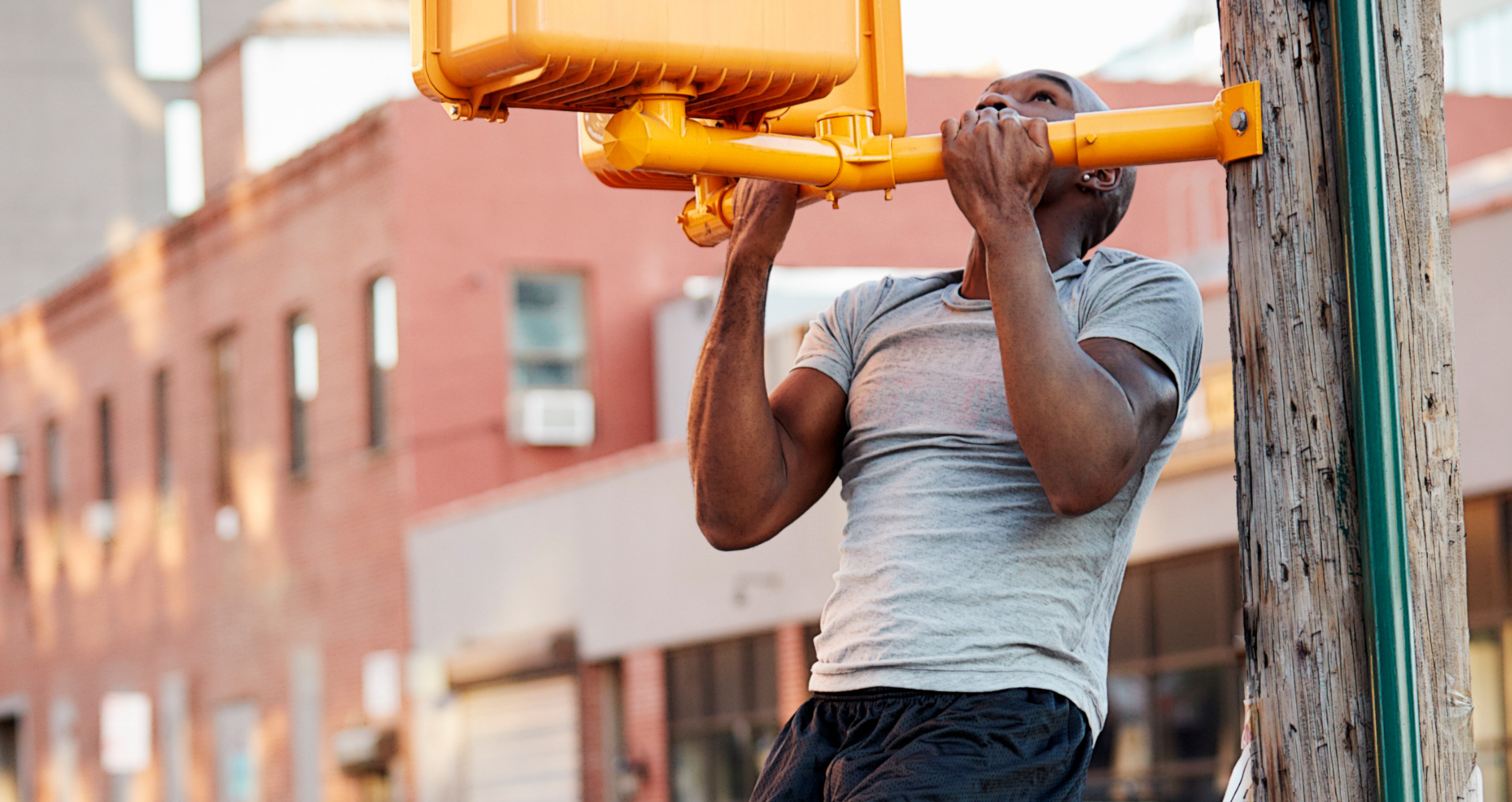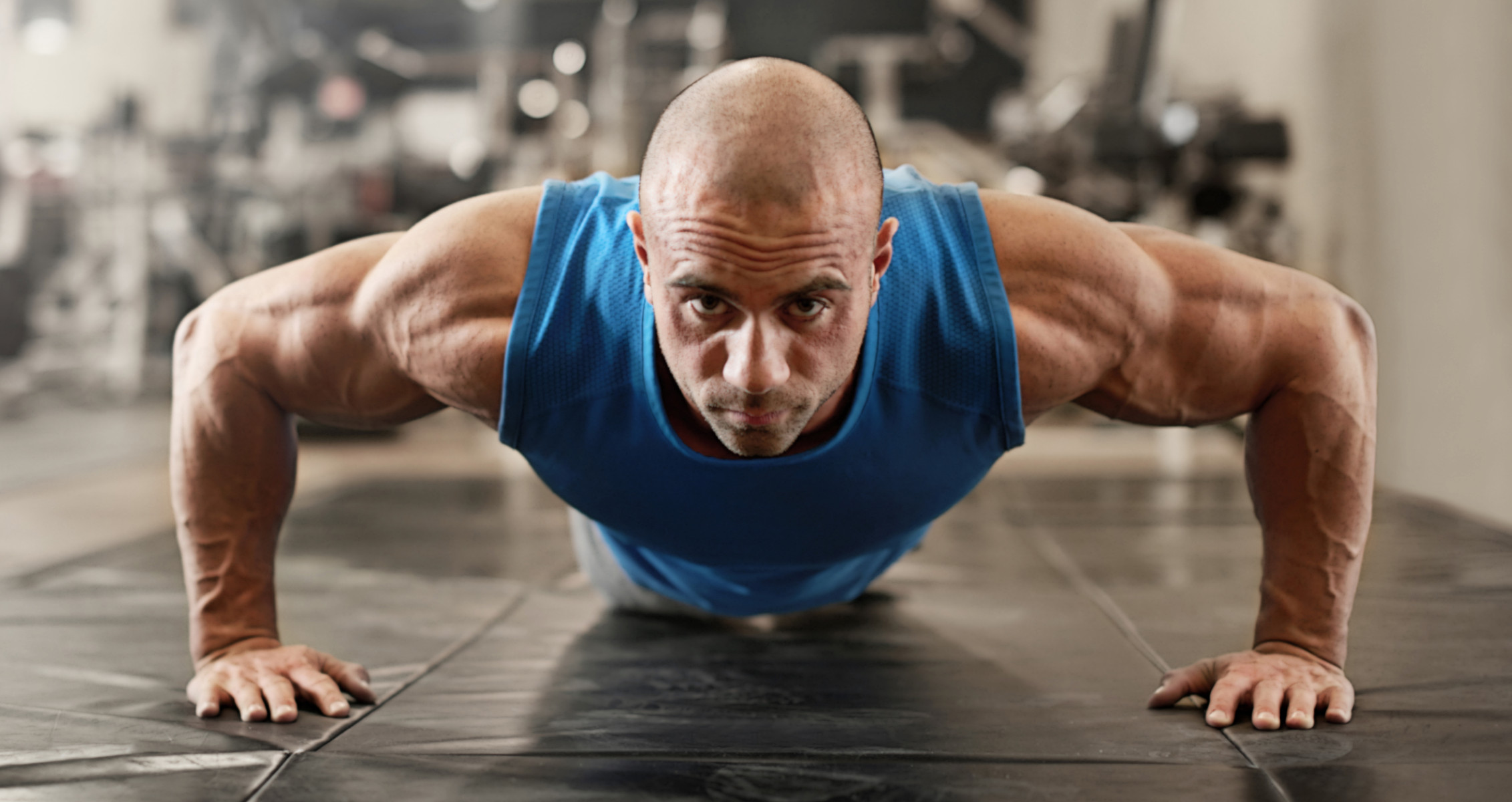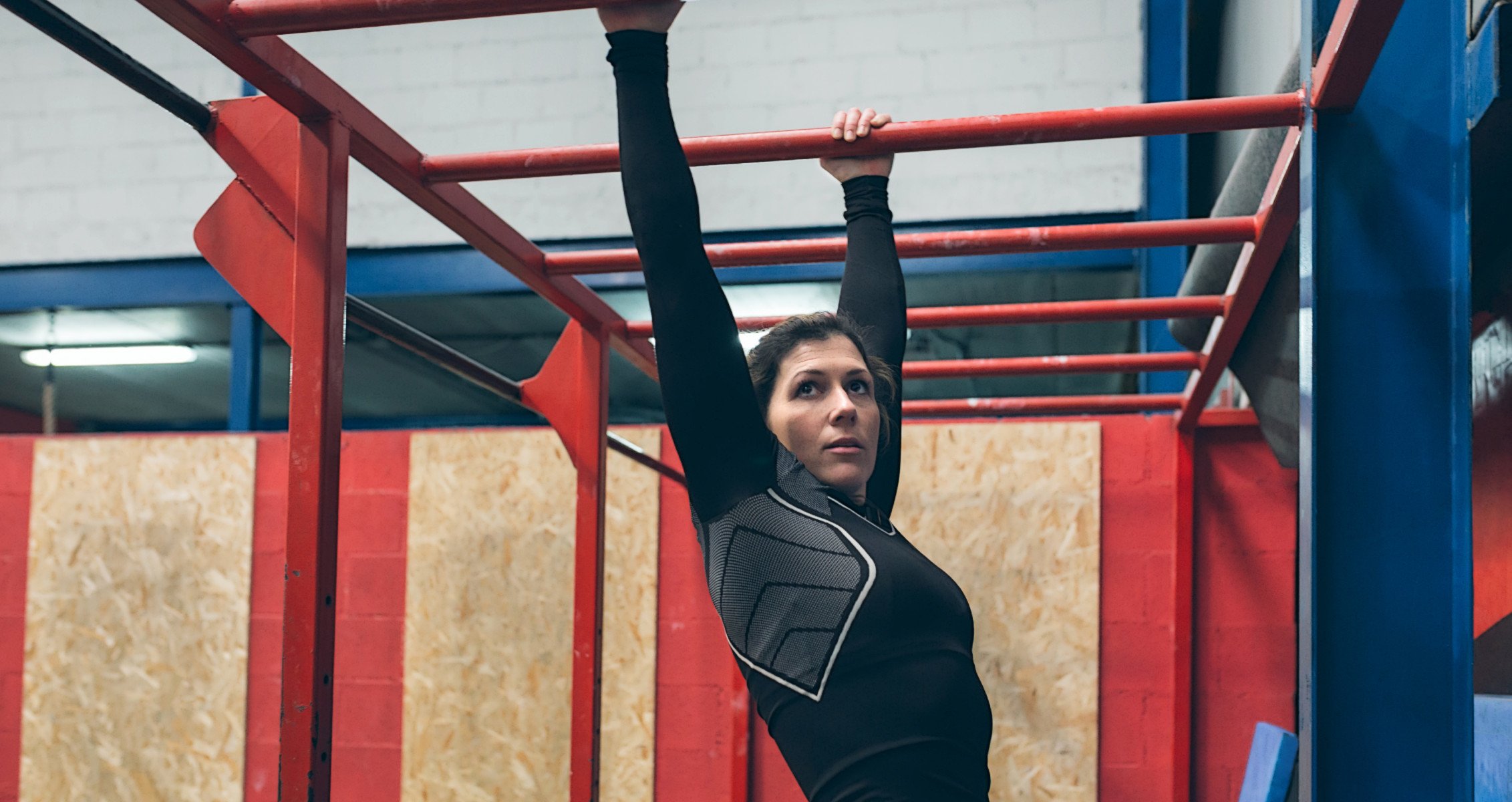Muscle Insider
New member
The Eight Best Bodyweight Exercises for the Biceps
Training biceps without iron seems like a waste of time. Who wants to do many sets of pushups and pullups when there’s a perfectly good gym around the corner or perhaps in your basement?
But in a time-crunched, mobile world, it’s not always possible to get to a gym and not everyone has the space for a home set-up. That’s why it’s valuable to have bodyweight substitutes available when traveling, stuck in a hotel room, or otherwise on the go. Studies suggest it’s possible to get results without investing in equipment or a gym membership, just your body weight.
This 8-exercise, two-set circuit will challenge your biceps with only your body as resistance. We’ll alternate pushing and pulling movements so you keep moving without rest, providing an aerobic component to your training as well.
Chaturanga
What it does: This popular yoga move challenges your biceps and overall core stability. It’s also an effective warm-up stretch to begin a workout.
How to do it: From a standard plank position, lower your elbows to shoulder height, pinning them against your side. Your chest, shoulders, upper arms, and elbows are in alignment. Push back to plank.
How many? 2 sets of 10 reps.
Chin Ups
What it does: Like the overhead pull-up, the chin-up is an effective shoulder and back exercise to build that V-shaped torso. But by doing the underhanded chin up, we place more emphasis on the biceps.
How to do it: Grab the bar with an underhand grip. Hanging from the bar, pull your shoulder blades back and down to lift your body and build momentum. Finish by pulling up with your arms.
How many? 2 sets of 10 reps (or as many as possible).
Dive Bomber Pushups
What it does: This pushup variation requires more use of the biceps and shoulders.
How to do it: Start with hips in the air and feet shoulder-width apart. Lower head and shoulders down as if going under a bar. As you push your head and shoulders into position, arch your back. Reverse process to return to starting position.
How many? 2 sets of 10 reps.
Inverted Bar Rows
What it does: This provides many of the benefits of a pullup while better isolating the biceps.
How to do it: Lie underneath a bar that’s several feet above you, such as in a squat rack. Hang underneath the bar with heels on the ground and arms fully extended. Pull your chest toward the bar. Pause at the top and return to starting position.
How many? 2 sets of 10 reps.
3-Way Pushups
What it does: By doing three sets of 10 pushups in three different positions consecutively, we’re amping up this workout quickly while challenging our biceps from three angles.
How to do it: Do 10 traditional pushups (hands directly below the shoulders) followed by 10 “diamond” pushups (index fingers and triceps touching), followed by 10 wide-grip pushups (hands wider than the shoulders)
How many? 2 sets of 10 reps of each.
Prone Grip Pullups
What it does: Though best known as a back movement, you’re also hitting the biceps, along with the shoulders and chest.
How to do it: Grab the bar with an overhand grip. Hanging from the bar, pull your shoulder blades back and down to lift your body and build momentum. Finish by pulling up with your arms.
How many? 2 sets of 10 reps (or as many as possible).
Plank
What it does: This promotes overall core stability, but your biceps are keeping you in the proper position.
How to do it: Lie in a prone pushup position with hands on the floor, elbows under shoulders and bent 90 degrees. Push up off the elbows, tucking your chin so your head is in line with your body. Keep head in line with spine and belly button drawn in. Hold for one minute.
How many? 2 sets of 60 seconds.
Monkey Bars
What it does: All that time spent gliding across the monkey bars as a kid was an awesome biceps workout. That’s still true as an adult.
How to do it: There are three methods. Avoid the one-arm, every-other bar swinging method. That looks most monkey-like but can tax the shoulders. Instead, start with both hands on the bar, facing the bars. Move one forward and then the other. Or you can move laterally, starting by facing perpendicular to the bars, reaching from one side and then bringing your second hand over.
How many? 2 trips through the bars, usually six or eight rungs.
Pete Williams is a NASM-CPT and the author or co-author of several fitness books, including Core Performance and Every Day is Game Day. His work has appeared in publications such as Men’s Health, Men’s Journal, and USA Today.

The Eight Best Bodyweight Exercises for the Biceps
Training biceps without iron seems like a waste of time. Who wants to do many sets of pushups and pullups when there’s a perfectly good gym around the corner or perhaps in your basement?
But in a time-crunched, mobile world, it’s not always possible to get to a gym and not everyone has the space for a home set-up. That’s why it’s valuable to have bodyweight substitutes available when traveling, stuck in a hotel room, or otherwise on the go. Studies suggest it’s possible to get results without investing in equipment or a gym membership, just your body weight.
This 8-exercise, two-set circuit will challenge your biceps with only your body as resistance. We’ll alternate pushing and pulling movements so you keep moving without rest, providing an aerobic component to your training as well.
Chaturanga
What it does: This popular yoga move challenges your biceps and overall core stability. It’s also an effective warm-up stretch to begin a workout.
How to do it: From a standard plank position, lower your elbows to shoulder height, pinning them against your side. Your chest, shoulders, upper arms, and elbows are in alignment. Push back to plank.
How many? 2 sets of 10 reps.
 Chin Ups
Chin Ups
What it does: Like the overhead pull-up, the chin-up is an effective shoulder and back exercise to build that V-shaped torso. But by doing the underhanded chin up, we place more emphasis on the biceps.
How to do it: Grab the bar with an underhand grip. Hanging from the bar, pull your shoulder blades back and down to lift your body and build momentum. Finish by pulling up with your arms.
How many? 2 sets of 10 reps (or as many as possible).
Dive Bomber Pushups
What it does: This pushup variation requires more use of the biceps and shoulders.
How to do it: Start with hips in the air and feet shoulder-width apart. Lower head and shoulders down as if going under a bar. As you push your head and shoulders into position, arch your back. Reverse process to return to starting position.
How many? 2 sets of 10 reps.
Inverted Bar Rows
What it does: This provides many of the benefits of a pullup while better isolating the biceps.
How to do it: Lie underneath a bar that’s several feet above you, such as in a squat rack. Hang underneath the bar with heels on the ground and arms fully extended. Pull your chest toward the bar. Pause at the top and return to starting position.
How many? 2 sets of 10 reps.
 3-Way Pushups
3-Way Pushups
What it does: By doing three sets of 10 pushups in three different positions consecutively, we’re amping up this workout quickly while challenging our biceps from three angles.
How to do it: Do 10 traditional pushups (hands directly below the shoulders) followed by 10 “diamond” pushups (index fingers and triceps touching), followed by 10 wide-grip pushups (hands wider than the shoulders)
How many? 2 sets of 10 reps of each.
Prone Grip Pullups
What it does: Though best known as a back movement, you’re also hitting the biceps, along with the shoulders and chest.
How to do it: Grab the bar with an overhand grip. Hanging from the bar, pull your shoulder blades back and down to lift your body and build momentum. Finish by pulling up with your arms.
How many? 2 sets of 10 reps (or as many as possible).
Plank
What it does: This promotes overall core stability, but your biceps are keeping you in the proper position.
How to do it: Lie in a prone pushup position with hands on the floor, elbows under shoulders and bent 90 degrees. Push up off the elbows, tucking your chin so your head is in line with your body. Keep head in line with spine and belly button drawn in. Hold for one minute.
How many? 2 sets of 60 seconds.
 Monkey Bars
Monkey Bars
What it does: All that time spent gliding across the monkey bars as a kid was an awesome biceps workout. That’s still true as an adult.
How to do it: There are three methods. Avoid the one-arm, every-other bar swinging method. That looks most monkey-like but can tax the shoulders. Instead, start with both hands on the bar, facing the bars. Move one forward and then the other. Or you can move laterally, starting by facing perpendicular to the bars, reaching from one side and then bringing your second hand over.
How many? 2 trips through the bars, usually six or eight rungs.
Pete Williams is a NASM-CPT and the author or co-author of several fitness books, including Core Performance and Every Day is Game Day. His work has appeared in publications such as Men’s Health, Men’s Journal, and USA Today.
Click here to view the article.
Training biceps without iron seems like a waste of time. Who wants to do many sets of pushups and pullups when there’s a perfectly good gym around the corner or perhaps in your basement?
But in a time-crunched, mobile world, it’s not always possible to get to a gym and not everyone has the space for a home set-up. That’s why it’s valuable to have bodyweight substitutes available when traveling, stuck in a hotel room, or otherwise on the go. Studies suggest it’s possible to get results without investing in equipment or a gym membership, just your body weight.
This 8-exercise, two-set circuit will challenge your biceps with only your body as resistance. We’ll alternate pushing and pulling movements so you keep moving without rest, providing an aerobic component to your training as well.
Chaturanga
What it does: This popular yoga move challenges your biceps and overall core stability. It’s also an effective warm-up stretch to begin a workout.
How to do it: From a standard plank position, lower your elbows to shoulder height, pinning them against your side. Your chest, shoulders, upper arms, and elbows are in alignment. Push back to plank.
How many? 2 sets of 10 reps.
Chin Ups
What it does: Like the overhead pull-up, the chin-up is an effective shoulder and back exercise to build that V-shaped torso. But by doing the underhanded chin up, we place more emphasis on the biceps.
How to do it: Grab the bar with an underhand grip. Hanging from the bar, pull your shoulder blades back and down to lift your body and build momentum. Finish by pulling up with your arms.
How many? 2 sets of 10 reps (or as many as possible).
Dive Bomber Pushups
What it does: This pushup variation requires more use of the biceps and shoulders.
How to do it: Start with hips in the air and feet shoulder-width apart. Lower head and shoulders down as if going under a bar. As you push your head and shoulders into position, arch your back. Reverse process to return to starting position.
How many? 2 sets of 10 reps.
Inverted Bar Rows
What it does: This provides many of the benefits of a pullup while better isolating the biceps.
How to do it: Lie underneath a bar that’s several feet above you, such as in a squat rack. Hang underneath the bar with heels on the ground and arms fully extended. Pull your chest toward the bar. Pause at the top and return to starting position.
How many? 2 sets of 10 reps.
3-Way Pushups
What it does: By doing three sets of 10 pushups in three different positions consecutively, we’re amping up this workout quickly while challenging our biceps from three angles.
How to do it: Do 10 traditional pushups (hands directly below the shoulders) followed by 10 “diamond” pushups (index fingers and triceps touching), followed by 10 wide-grip pushups (hands wider than the shoulders)
How many? 2 sets of 10 reps of each.
Prone Grip Pullups
What it does: Though best known as a back movement, you’re also hitting the biceps, along with the shoulders and chest.
How to do it: Grab the bar with an overhand grip. Hanging from the bar, pull your shoulder blades back and down to lift your body and build momentum. Finish by pulling up with your arms.
How many? 2 sets of 10 reps (or as many as possible).
Plank
What it does: This promotes overall core stability, but your biceps are keeping you in the proper position.
How to do it: Lie in a prone pushup position with hands on the floor, elbows under shoulders and bent 90 degrees. Push up off the elbows, tucking your chin so your head is in line with your body. Keep head in line with spine and belly button drawn in. Hold for one minute.
How many? 2 sets of 60 seconds.
Monkey Bars
What it does: All that time spent gliding across the monkey bars as a kid was an awesome biceps workout. That’s still true as an adult.
How to do it: There are three methods. Avoid the one-arm, every-other bar swinging method. That looks most monkey-like but can tax the shoulders. Instead, start with both hands on the bar, facing the bars. Move one forward and then the other. Or you can move laterally, starting by facing perpendicular to the bars, reaching from one side and then bringing your second hand over.
How many? 2 trips through the bars, usually six or eight rungs.
Pete Williams is a NASM-CPT and the author or co-author of several fitness books, including Core Performance and Every Day is Game Day. His work has appeared in publications such as Men’s Health, Men’s Journal, and USA Today.

The Eight Best Bodyweight Exercises for the Biceps
Training biceps without iron seems like a waste of time. Who wants to do many sets of pushups and pullups when there’s a perfectly good gym around the corner or perhaps in your basement?
But in a time-crunched, mobile world, it’s not always possible to get to a gym and not everyone has the space for a home set-up. That’s why it’s valuable to have bodyweight substitutes available when traveling, stuck in a hotel room, or otherwise on the go. Studies suggest it’s possible to get results without investing in equipment or a gym membership, just your body weight.
This 8-exercise, two-set circuit will challenge your biceps with only your body as resistance. We’ll alternate pushing and pulling movements so you keep moving without rest, providing an aerobic component to your training as well.
Chaturanga
What it does: This popular yoga move challenges your biceps and overall core stability. It’s also an effective warm-up stretch to begin a workout.
How to do it: From a standard plank position, lower your elbows to shoulder height, pinning them against your side. Your chest, shoulders, upper arms, and elbows are in alignment. Push back to plank.
How many? 2 sets of 10 reps.

What it does: Like the overhead pull-up, the chin-up is an effective shoulder and back exercise to build that V-shaped torso. But by doing the underhanded chin up, we place more emphasis on the biceps.
How to do it: Grab the bar with an underhand grip. Hanging from the bar, pull your shoulder blades back and down to lift your body and build momentum. Finish by pulling up with your arms.
How many? 2 sets of 10 reps (or as many as possible).
Dive Bomber Pushups
What it does: This pushup variation requires more use of the biceps and shoulders.
How to do it: Start with hips in the air and feet shoulder-width apart. Lower head and shoulders down as if going under a bar. As you push your head and shoulders into position, arch your back. Reverse process to return to starting position.
How many? 2 sets of 10 reps.
Inverted Bar Rows
What it does: This provides many of the benefits of a pullup while better isolating the biceps.
How to do it: Lie underneath a bar that’s several feet above you, such as in a squat rack. Hang underneath the bar with heels on the ground and arms fully extended. Pull your chest toward the bar. Pause at the top and return to starting position.
How many? 2 sets of 10 reps.

What it does: By doing three sets of 10 pushups in three different positions consecutively, we’re amping up this workout quickly while challenging our biceps from three angles.
How to do it: Do 10 traditional pushups (hands directly below the shoulders) followed by 10 “diamond” pushups (index fingers and triceps touching), followed by 10 wide-grip pushups (hands wider than the shoulders)
How many? 2 sets of 10 reps of each.
Prone Grip Pullups
What it does: Though best known as a back movement, you’re also hitting the biceps, along with the shoulders and chest.
How to do it: Grab the bar with an overhand grip. Hanging from the bar, pull your shoulder blades back and down to lift your body and build momentum. Finish by pulling up with your arms.
How many? 2 sets of 10 reps (or as many as possible).
Plank
What it does: This promotes overall core stability, but your biceps are keeping you in the proper position.
How to do it: Lie in a prone pushup position with hands on the floor, elbows under shoulders and bent 90 degrees. Push up off the elbows, tucking your chin so your head is in line with your body. Keep head in line with spine and belly button drawn in. Hold for one minute.
How many? 2 sets of 60 seconds.

What it does: All that time spent gliding across the monkey bars as a kid was an awesome biceps workout. That’s still true as an adult.
How to do it: There are three methods. Avoid the one-arm, every-other bar swinging method. That looks most monkey-like but can tax the shoulders. Instead, start with both hands on the bar, facing the bars. Move one forward and then the other. Or you can move laterally, starting by facing perpendicular to the bars, reaching from one side and then bringing your second hand over.
How many? 2 trips through the bars, usually six or eight rungs.
Pete Williams is a NASM-CPT and the author or co-author of several fitness books, including Core Performance and Every Day is Game Day. His work has appeared in publications such as Men’s Health, Men’s Journal, and USA Today.
Click here to view the article.




